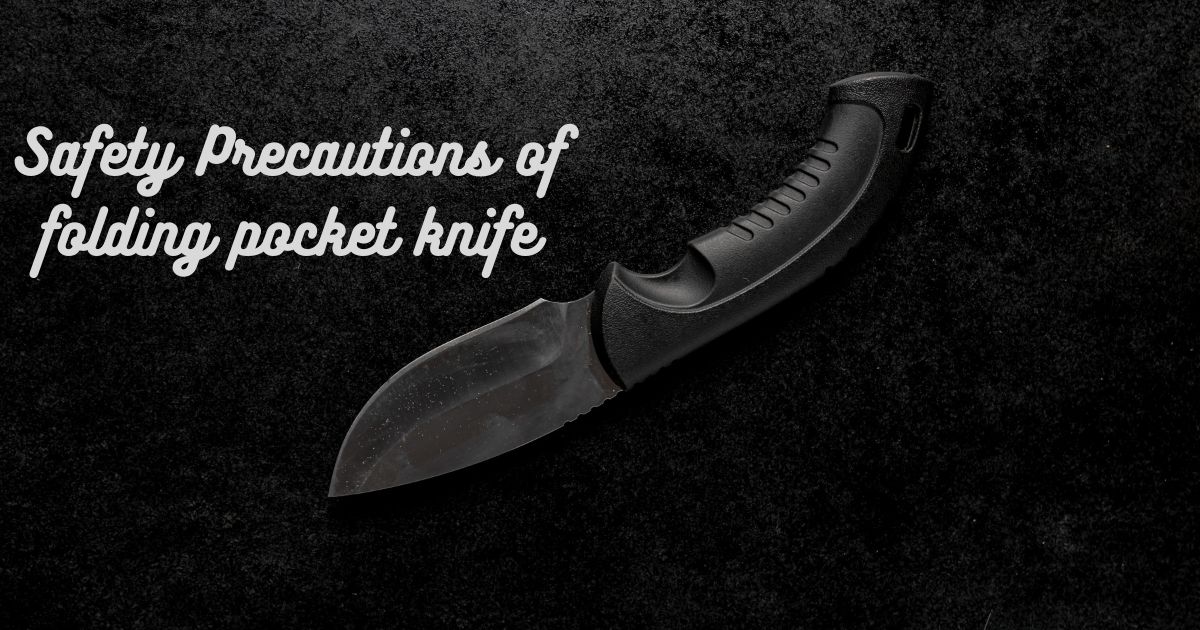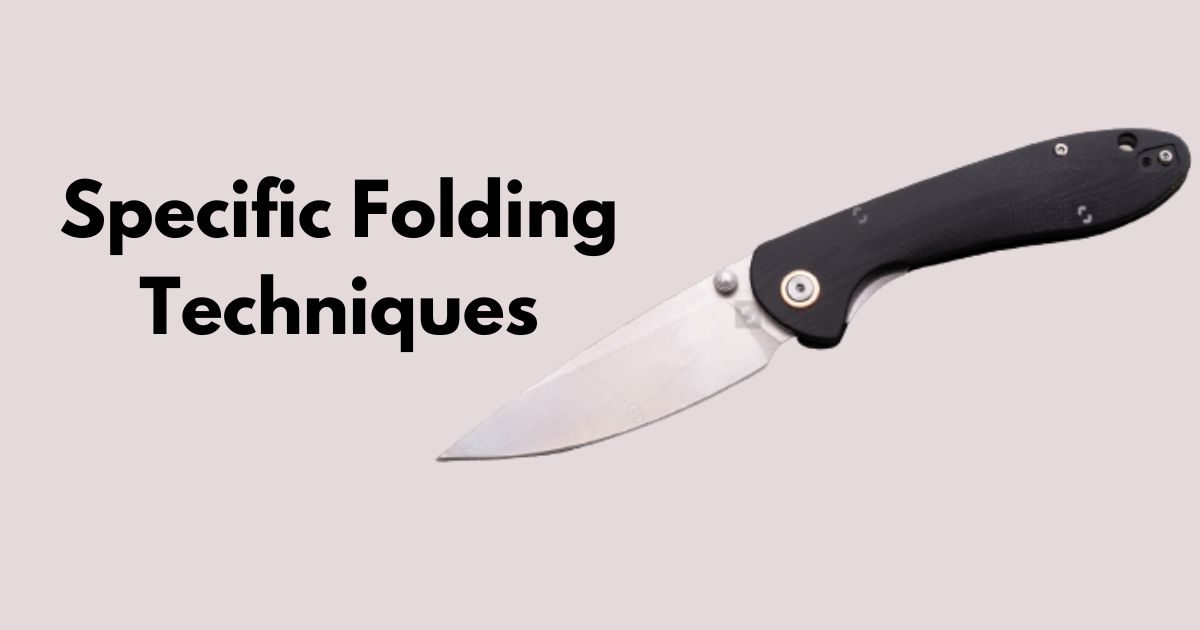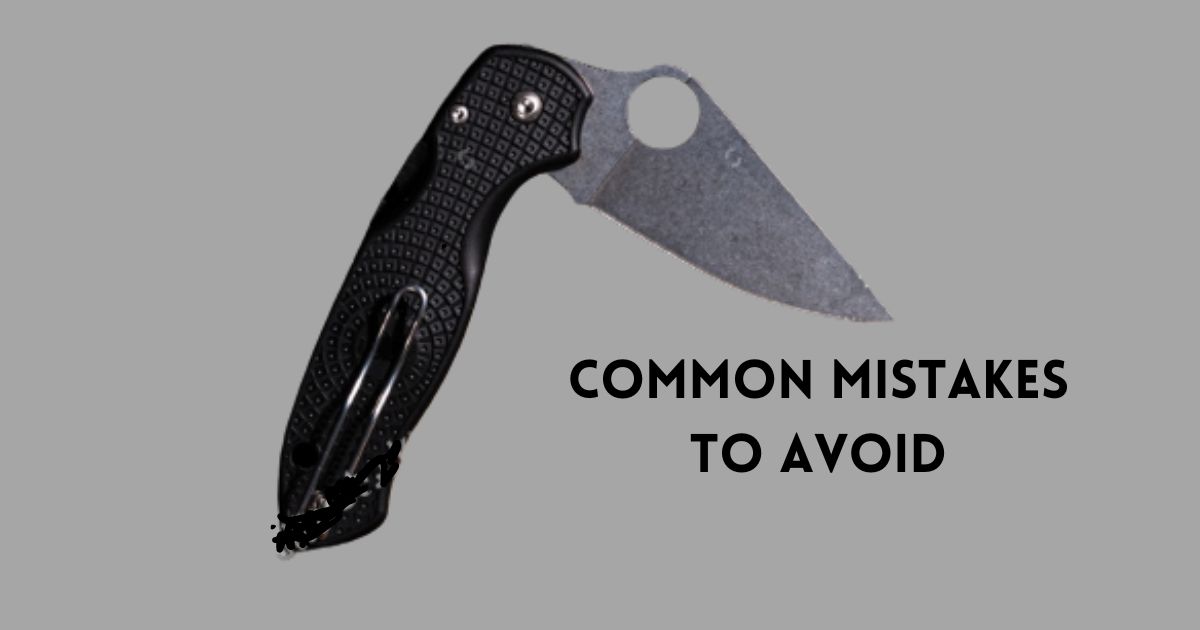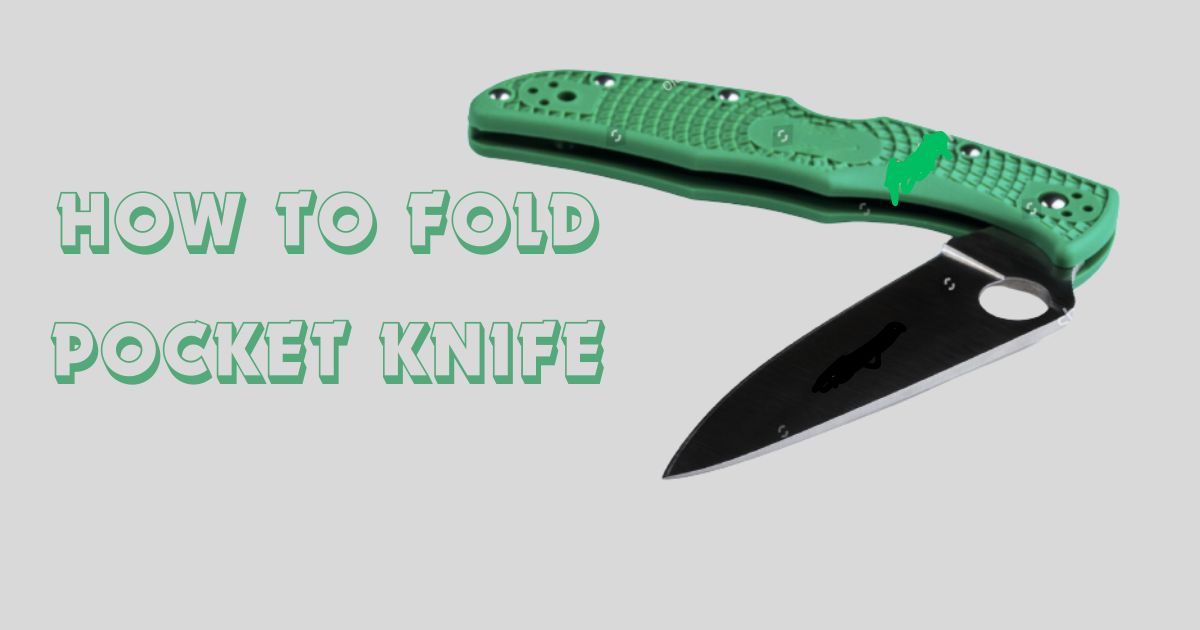Unlocking Convenience: The Ultimate Tutorial on Folding a Pocket Knife with Ease
Table of Contents
ToggleIntroduction
A pocket knife is one of the most sought-after handy tools because it is easily carried and convenient for everyone. If you got your first pocket knife, then you must have knowledge of some important techniques that can help you improve your techniques. Learning how to fold your pocket knife is important because it helps outdoor enthusiasts. In this article, we will discuss pocket knives’ important techniques, safety precautions, a step-by-step guide for folding pocket knives, and the necessary tools and materials that make the pocket knife more efficient and useful.
Importance of Proper Folding Techniques
Here, we‘ll discuss some important techniques that are very necessary.
Safety First:
Folding a pocket knife improperly can lead to accidents and injuries. Understanding the correct way to fold your knife ensures that you keep your fingers and hands safe during the process. We’ll explore the essential safety guidelines to follow, emphasizing the need for caution and awareness.
Preserving Blade Sharpness:
The blade is the heart of any knife, and improper folding can lead to premature dulling. We’ll discuss the science behind blade maintenance and how folding techniques play a crucial role in preserving the sharpness of your pocket knife.
Enhancing Knife Longevity:
A well-maintained folding mechanism ensures the longevity of your pocket knife. Neglecting proper folding techniques can result in wear and tear on hinges, locks, and other critical components. We’ll provide insights into routine maintenance to keep your knife in peak condition.
Understanding Your Pocket Knife and Safety Precautions:
- Blade:The first step in the blade of your pocket knife is its shape, e.g., drop, clip, point, and styles, e.g., plain, edge, serrated, etc., which are important to cater for specific tasks. Whether in materials or not, you must understand the significance of sharpness and its durability.
- Handle:The handle is also an important factor in which their material, e.g., wood, aluminum, and their functions, including weight, grip, etc., are to be considered.
- Opening Mechanism:Manual Opening: Learn the classic thumb stud or nail nick methods for manually opening your knife.
- Assisted Opening: Understand the mechanics of assisted opening knives, where an internal mechanism aids in blade deployment.
- Pivot and Hinges: The pivot and hinges play a crucial role in the smooth opening and closing of the knife. Explore how proper maintenance contributes to a seamless folding experience.
- Pocket Clip:Orientation: Examine the pocket clip and its various orientations for carrying your knife in a tip-up or tip-down position.
Safety precautions when folding a pocket knife:

Know Your Local Laws:
Familiarize Yourself: Research and understand the local laws regarding the possession and carrying of pocket knives in your area.
Compliance: Ensure your knife complies with legal requirements to avoid any legal complications.
Inspect your Knife:
Check for Damage: Before use, inspect your knife for any visible damage, loose components, or irregularities.
Ensure sharpness: A sharp blade is safer than a dull one.
Use a Safe Technique: Follow proper folding techniques to minimize the risk of accidental cuts.
Maintain a Controlled Environment:
Choose a Safe Space: Find a stable and well-lit area for folding your knife, minimizing the risk of accidents.
Remove Distractions: Avoid distractions and focus on the task at hand, ensuring a controlled and safe environment.
Secure the locking mechanism (if applicable):
Understand the Lock: If your knife has a locking mechanism, make sure you understand how to engage and disengage it properly.
Check Stability: Confirm that the locking mechanism securely holds the blade in place during use.
Practice controlled opening and closing:
Slow and steady: Avoid rapid or forceful movements when opening or closing the knife.
Practice Regularly: Familiarize yourself with the folding process through controlled practice to build confidence.
Factors to Consider When Folding a Pocket Knife
Every pocket has its own folding mechanism, which keeps it straightforward. In this step-by-step section, we provide guidelines that will be helpful in various pocket knife mechanisms.
Secure Your Grip:
Hold the knife securely in your dominant hand, ensuring a firm grip on the handle.
Locate the lock (if applicable):
If your knife has a locking mechanism, identify its location. Common types include lockback, liner lock, and frame lock.
Release the lock (if applicable).
For knives with a locking mechanism, disengage the lock by pressing, sliding, or releasing the mechanism.
Open the blade.
Use your thumb or index finger to open the blade slowly and smoothly. For knives with a thumb stud or nail nick, apply gentle pressure.
Fully Extend the Blade:
Extend the blade until it locks into place, ensuring it is fully open and secured.
Handle the knife safely.
For pocket knife handle safety, always keep your finger at a distance from the blade’s edge.
Specific folding techniques:

**A. Slip Joint:
- Hold the knife Firmly:
- Apply backward Pressure:
- Apply backward pressure to the back of the blade, allowing the spring to disengage.
- Fold the blade:
- With the pressure applied, gently fold the blade back into the handle.
**B. Lockback:
Identify the lock release:
Locate the release mechanism, usually positioned on the back of the handle.
Press the release:
Press or slide the release mechanism to disengage the lock.
Fold the Blade:
With the lock released, carefully fold the blade back into the handle.
**C. Liner Lock:
Hold the knife Securely:
Securely hold the knife handle in your dominant hand.
Locate the Liner:
Identify the liner, a metal piece on the interior of the handle.
Press the Liner:
Use your thumb to press the liner to the side, releasing the blade.
Fold the Blade:
Once the liner is disengaged, gently fold the blade back into the handle.
**D. Frame Lock:
Grip the knife Firmly:
Firmly grip the handle with the frame lock on your dominant hand.
Locate the Frame Lock:
Identify the frame lock, usually on the interior of the handle.
Press the frame:
Use your thumb to press the frame lock aside, releasing the blade.
Fold the blade:
Without the frame lock damage, fold the blade to the handle of the knife.
Essential Tips for folding knife Maintenance
Proper maintenance is the key to preserving the longevity and performance of your pocket knife. Regular care ensures that your blade stays sharp, the folding mechanism remains smooth, and the overall functionality of your knife is optimized. Here are some essential tips for maintaining your pocket knife:
Cleaning Your Pocket Knife:
Materials needed: mild soap, warm water, a soft brush, and a cloth.
Procedure:
Disassemble the knife if possible (following manufacturer guidelines).
Clean the blade, handle, and other components with a soft brush and warm, soapy water.
Pay attention to crevices and pivot points.
Dry thoroughly to prevent corrosion.
Sharpening the Blade:
Materials needed: sharpening stone, honing rod, or a knife sharpening system.
Procedure:
Follow the manufacturer’s recommendations for sharpening angles.
Hone the blade regularly to keep it sharp between sharpening sessions.
- Check and tighten Screws:
Regularly inspect all screws and hardware for tightness.
Always use a useful screwdriver to tighten any loose screws.
Do not over-tight because it affects their functions.
Inspect the locking mechanism:
For knives with locking mechanisms, regularly check the mechanism for wear or damage.
Ensure the lock engages securely and disengages smoothly.
Clean and lubricate the locking mechanism as part of routine maintenance.
- Avoid Harsh Conditions:
Always clean your knife and keep it in extreme conditions—saltwater and high temperatures affect it. If the pocket knife gets wet, immediately clean it from corrosion.
- Store Properly:
Store your pocket knife in a dry, cool place.
Consider using a blade cover or sheath to protect the blade and prevent accidental cuts.
Regular Inspections:
Conduct regular inspections of the entire knife, paying attention to any signs of wear, corrosion, or damage.
Use appropriately:
Use the knife for its intended purposes and avoid tasks that may cause excessive strain or damage.
Follow manufacturer guidelines:
If you want to keep your pocket knife always maintained, cleaned, and sharp, you must follow the guidelines of the manufacturer because these guidelines keep your pocket knife in optimal condition and ensure your experience is safer and more secure.
Common Mistakes to Avoid

There are some mistakes that need improvement.
Forcing the Blade:
Mistake: applying excessive force when opening or closing the knife.
Consequence: straining the folding mechanism, causing premature wear, or risking injury.
Solution: Use controlled, steady pressure when operating your pocket knife. If it doesn’t open smoothly, investigate for potential issues.
Neglecting Maintenance:
Mistake: Failing to clean, lubricate, and inspect your knife regularly.
Consequences: reduced blade sharpness, decreased folding mechanism efficiency, and increased risk of corrosion.
Solution: Establish a routine maintenance schedule, cleaning and lubricating your knife as needed.
Ignoring Safety Measures:
Mistake: disregarding safety precautions, such as keeping fingers away from the blade or using the wrong knife for a task.
Consequence: increased risk of accidents, injuries, or damaging the knife.
Solution: Always prioritize safety. Use the appropriate knife for the task, keep a secure grip, and follow proper folding techniques.
Using the knife improperly:
Mistake: Using the pocket knife for tasks it’s not designed for, such as prying or twisting.
Consequence: damaged blades, bent components, and compromised functionality.
Solution: First, you must have knowledge of the limitations of your pocket knife and the tasks that your knife has specified. If you want to perform different tasks, then you must use another tool
Overlooking loose screws:
Mistake: Neglecting to check and tighten loose screws on the handle.
Consequence: unstable knife components, affecting performance and safety.
Solution: Regularly inspect the knife for loose screws, tightening them appropriately. Be cautious not to over-tighten.
Exposing the Knife to Harsh Environments:
Mistake: Allowing the knife to be exposed to extreme conditions like excessive moisture, saltwater, or extreme temperatures.
Consequences: corrosion, rust, and accelerated wear.
Solution: Avoid exposing your knife to harsh conditions. If, by chance, it becomes wet, then immediately clean it with dry cloth paper and place it in a safe environment.
Skipping the lock check:
Mistake: Failing to regularly check the locking mechanism (if applicable).
Consequence: unreliable locking, compromising safety during use.
Solution: Routinely inspect the locking mechanism for wear or damage, ensuring it engages securely and disengages smoothly.
Storing the knife improperly:
Mistake: Storing the knife without proper protection or in a damp environment.
Consequence: increased risk of corrosion, dullness, and potential accidents when retrieving the knife.
Solution: Use a sheath or blade cover, and store the knife in a cool, dry place.
Disregarding Legal Regulations:
Mistake: Ignoring local laws and regulations regarding the possession and carrying of pocket knives.
Consequence: legal complications, fines, or confiscation of the knife.
Solution: Stay informed about local laws and ensure your knife complies with regulations..
Choosing the Right Folding Knife
When you choose the right folding knife, you follow these guidelines that help you make good decisions.
Intended Use:
Consideration: Identify the primary tasks you’ll use the knife for (e.g., everyday carry, camping, hiking, self-defense).
Guidance: Different knives are designed for specific purposes, so choose one that suits your intended use.
Blade Type and Shape:
Consideration: Select the blade type that must be straight and serrated, and perform your tasks perfectly.
Guidance: Choose the blade shapes that have a drop point and clip points for special tasks like cutting and piercing.
Handle Material:
Consideration: Explore handle materials (e.g., wood, G-10, aluminum) for durability, weight, and grip.
Guidance: Opt for a handle material that provides a comfortable and secure grip, especially during extended use.
Opening Mechanism:
Consideration: Decide on an opening mechanism (e.g., manual opening or assisted opening) based on your preferences and local regulations.
Guidance: Assisted opening mechanisms can provide quick deployment, while manual opening offers simplicity and reliability.
Size and weight:
Consideration: Determine the ideal size and weight for your everyday carry or specific tasks.
Guidance: A balance between a compact size for easy carry and a substantial feel for effective use is often sought.
Pocket Clip Orientation:
Consideration: Choose a pocket clip orientation (e.g., tip-up, tip-down) based on your preference for ease of access.
Guidance: Some users prefer a specific orientation for a more comfortable and convenient carry.
Brand Reputation:
Consideration: Research and consider the reputation of the knife brand for quality, craftsmanship, and customer support.
Guidance: Established brands with a history of producing reliable knives are often a safe choice.
Budget:
Consideration: Establish a budget range for your folding knife purchase.
Guidance: While high-quality knives can be an investment, there are also reliable options available at various price points.
Legal Regulations:
Consideration: Be aware of local laws and regulations regarding the possession and carrying of folding knives.
Guidance: Ensure your chosen knife complies with legal requirements to avoid any legal complications.
Conclusion:
In conclusion, folding a pocket knife is not just about the physical act; it’s about building a connection with a tool that can be both functional and symbolic. As you hone your skills, remember the responsibility that comes with wielding a blade. Respect your knife, follow safety guidelines, and continue exploring the vast and fascinating world of folding knives.
Choosing the right folding knife is a personal decision, influenced by your intended use, preferences, and local regulations. Whether you’re seeking a reliable everyday carry or a specialized tool for outdoor adventures, the considerations outlined in this guide will guide you toward making an informed choice.
Thank you for joining us on this exploration of folding knives. Wield your knowledge responsibly, and may every fold be a testament to the craftsmanship and artistry of these incredible tools. Happy folding!
FAQ
Q: Can I carry a folding knife in my pocket legally?
A: It depends on local regulations. Many places allow the carrying of folding knives with blades under a certain length for everyday use.
Q: How do I keep my folding knife sharp?
A: Regularly sharpen your knife using a sharpening stone, honing rod, or knife sharpening system. Honing the blade between sharpening sessions helps maintain its sharpness.
Q: How often should I lubricate my folding knife?
A: Lubricate your knife’s pivot points and hinges periodically, especially after cleaning. The frequency depends on usage, but a few drops of high-quality knife oil every few months are generally sufficient.
Q: Are assisted-opening knives legal to carry?
A: Regulations vary. In many places, assisted opening knives are legal, but it’s essential to check local laws. They often classify assisted-opening knives differently from automatic knives.
Q: What’s the best handle material for a folding knife?
A: It depends on your preferences and use. Common materials include G-10 for durability, wood for aesthetics, and aluminum for a balance of strength and weight.
Q: How do I choose the right size for an everyday carry (EDC) folding knife?
A: Consider your comfort, the tasks you’ll perform, and local regulations. A compact size is often preferred for EDC, balancing ease of carry with effective functionality.
.




